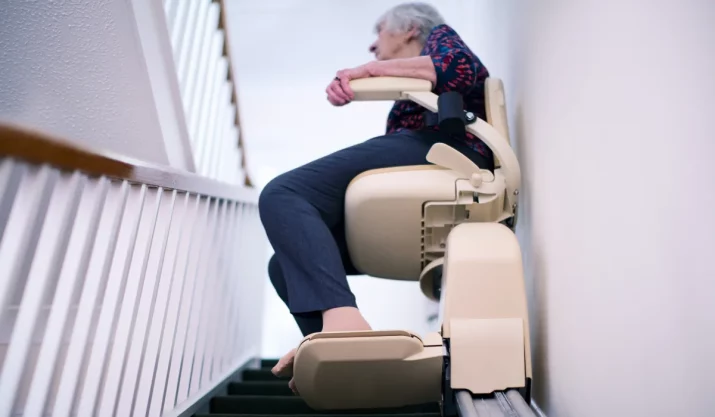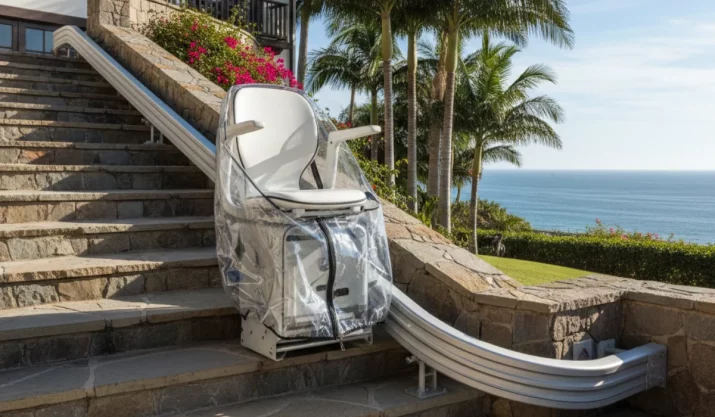Does Medi-Cal Cover Stair Lifts or Home Modifications?

Table of Contents
If you or someone you care for has trouble moving around safely at home, you’ve probably looked into installing a stair lift or making some key home modifications. These upgrades can help avoid injuries and reduce dependence on others, but they come at a cost.
Naturally, many people wonder: Does Medi-Cal cover stair lifts or home modifications?
This article will help you understand how Medi-Cal coverage works in California when it comes to home upgrades like chairlifts, as well as what other healthcare or funding options you might have.
Key Takeaways
- Medi-Cal usually does not cover stair lifts unless they are medically necessary and part of a care plan.
- Waiver programs may help with home modifications, but often do not guarantee full coverage for stair lifts.
- Other support may come from Medicare Advantage plans, VA grants, local nonprofits, or regional disability agencies.
- California residents can explore IHSS, payment plans, or private funding when public programs do not fully help.
Does Medi-Cal Help with Stair Lift Costs or Home Accessibility Changes?
Medi-Cal, California’s version of Medicaid, does not typically cover stair lifts through its standard benefits. While it does help pay for some durable medical equipment (DME), stair lifts are usually classified as home convenience items, not medically necessary tools.
That said, beneficiaries who qualify for certain waiver programs may have other options, especially if they are trying to avoid placement in a nursing home or assisted living facility. Still, it’s important to understand how it draws the line between what it will and won’t fund.
Medi-Cal and Durable Medical Equipment (DME)
Medi-Cal’s DME benefits typically include equipment like hospital beds, patient lifts, walkers, and scooters, items that can directly impact a person’s ability to perform daily tasks.
Stair lifts, despite their safety benefits, are not usually included unless they are deemed a medical necessity through a documented care plan. That makes its coverage through Medi-Cal rare and case-specific.
For any DME to be approved, a healthcare provider must prescribe the equipment and show how it supports the patient’s health.
Home and Community-Based Services (HCBS) Waivers
Some Medi-Cal waiver programs under the umbrella of HCBS may offer more flexibility. These waivers are designed to help seniors and people with disabilities receive home health and health care services in a home setting rather than move into an institutional setting.
Programs like the Multipurpose Senior Services Program (MSSP) or the Assisted Living Waiver may allow funds to be used for certain home upgrades, but they usually require a personalized care plan and can take time to apply for.
Funding is limited, eligibility is strict, and stair lifts are still not always covered.
Eligibility and Documentation
For Medi-Cal coverage to apply to a stair lift or similar home modifications, you’ll need more than just a doctor’s note. The equipment has to be part of an official care plan, and there must be clear evidence that the lift is essential for safe movement between floors in the home.
It can help to work with a caregiver, case manager, or social worker to ensure your documentation meets the requirements for health insurance approval under Medi-Cal or any related insurance plans.
What if Medi-Cal Doesn’t Cover Your Stair Lift or Home Modification?
Even if you can’t get Medi-Cal coverage, there are still cost-effective solutions available to California residents. The cost of a stair lift can start at $2,000, but the right financial assistance can make it more manageable.
Medicare and Medicare Advantage Plans
If you have Original Medicare (Part A or Medicare Part B), you should know that medicare coverage does not include stair lifts. Like Medi-Cal, it typically only covers DME that meets strict criteria for medical necessity, and stair lifts don’t usually qualify.
However, some Medicare Advantage plans, also known as Medicare Part C, may offer funding options for safety-related home upgrades as part of their healthcare benefits.
These extras vary widely by plan and region, so it’s worth checking directly with your plan provider to see if you’re eligible for partial or full coverage of a chairlift.
Department of Veterans Affairs (VA)
If you or your spouse is a veteran, the VA may be one of your best resources. It offers several grant programs that can fund home modifications, including stair lifts, as part of its health care services.
The Home Improvements and Structural Alterations (HISA) grant is one such program. You’ll need a recommendation from a VA provider, and the upgrade must support your ability to stay safely in your own home.
Local and Nonprofit Programs in California
In California, local organizations and nonprofits sometimes offer grants or sliding-scale funding to help people with mobility issues remain at home. These programs are often run through Area Agencies on Aging (AAA), Aging and Disability Resource Centers (ADRCs), or other regional partners who specialize in senior or disability services.
Some may cover stair lifts outright, while others may provide referrals to vendors offering affordable installation plans.
In-Home Supportive Services (IHSS)
California’s IHSS program, part of its Medicaid programs, won’t directly pay for stair lifts. However, it does fund caregivers to assist with tasks like bathing, cooking, and mobility inside the home. By relieving the cost of daily assistance, it can free up household funds that you might apply toward the cost of a lift.
In some cases, your IHSS caseworker might also help you identify programs or waivers for home modification support.
Private Loans or Payment Plans
If none of the public or nonprofit programs work out, you can consider private insurance plans, medical credit lines, or financing options from stair lift providers. Many California-based vendors offer cost-effective monthly payment plans, often with zero interest for qualified buyers.
This makes it easier to manage the cost of a stair lift while still ensuring your home is safe and accessible.
When Stair Lift Coverage Gets Confusing, We Can Help
Finding out whether Medi-Cal covers stair lifts or home modifications can feel like trying to untangle red tape. Between waivers, eligibility requirements, and inconsistent definitions of medical necessity, it’s tough to get a straight answer.
That’s where California Mobility comes in.
We’ve helped thousands of families across the state find clear, personalized solutions for their mobility issues, whether through Medi-Cal workarounds, local grant programs, or easy payment options. If you’re trying to stay in your home and need help navigating stair lift coverage, let’s talk.
We’ll help you figure out the right fit, no pressure, just clear answers from people who understand what it takes to stay safe and independent in your home.






